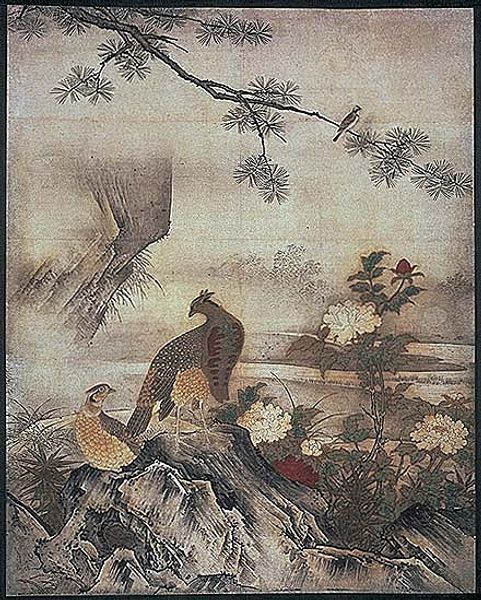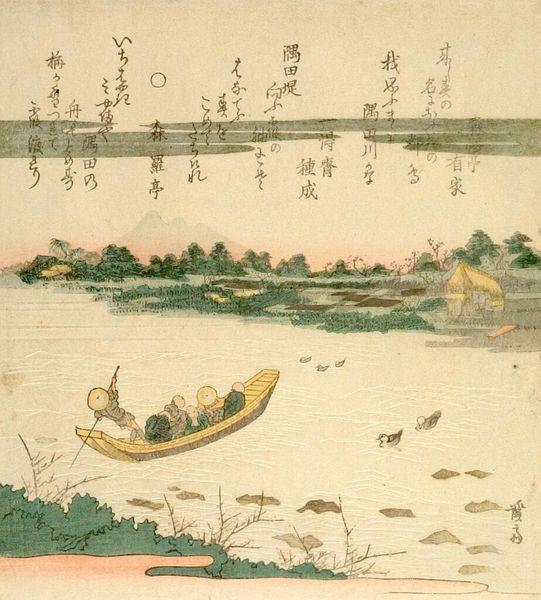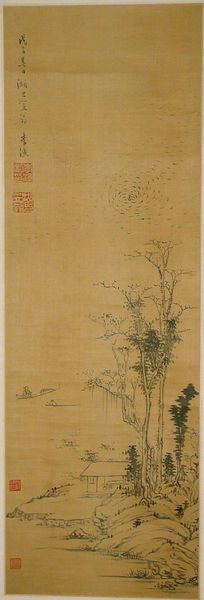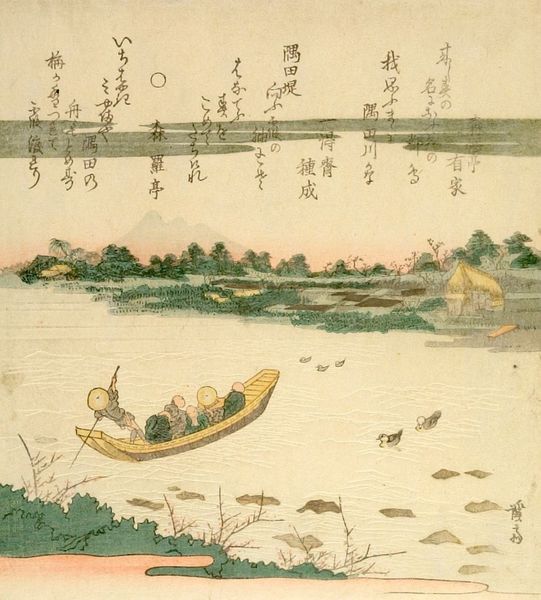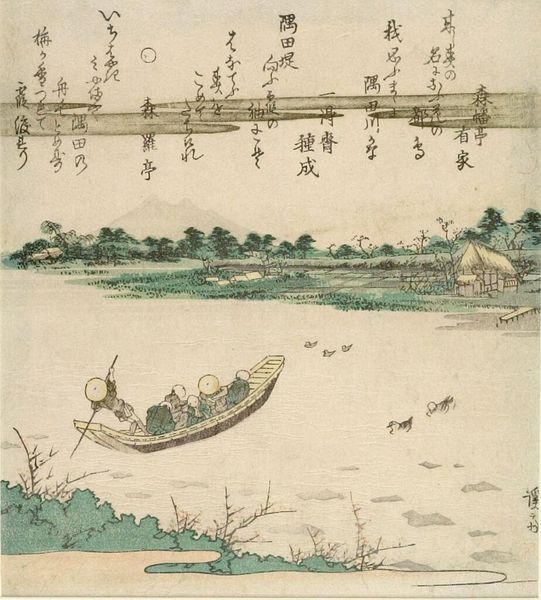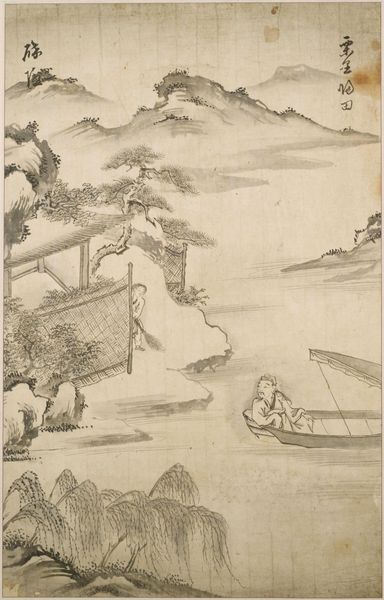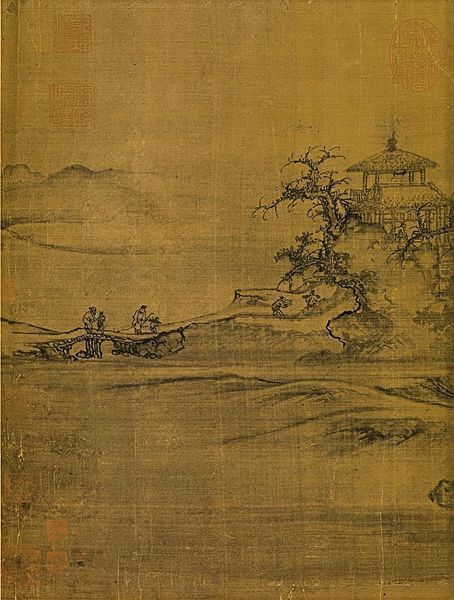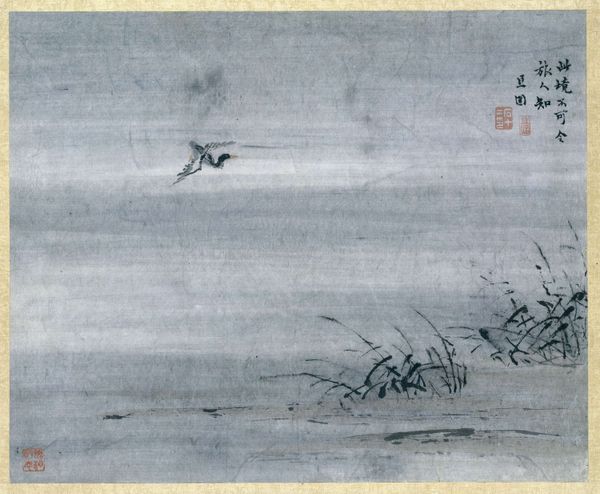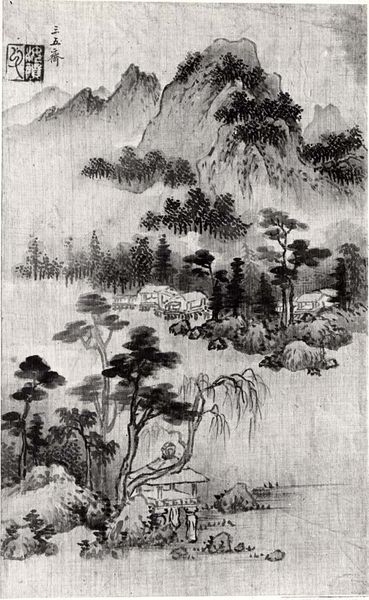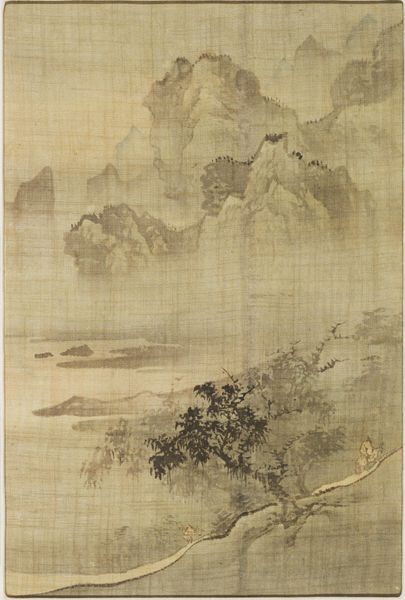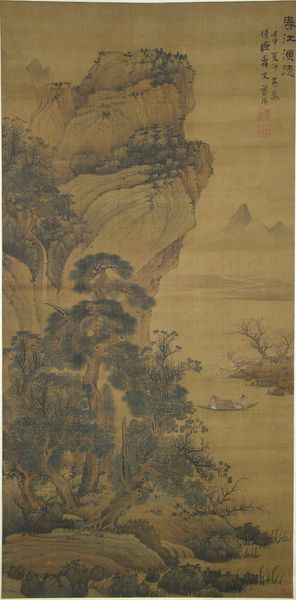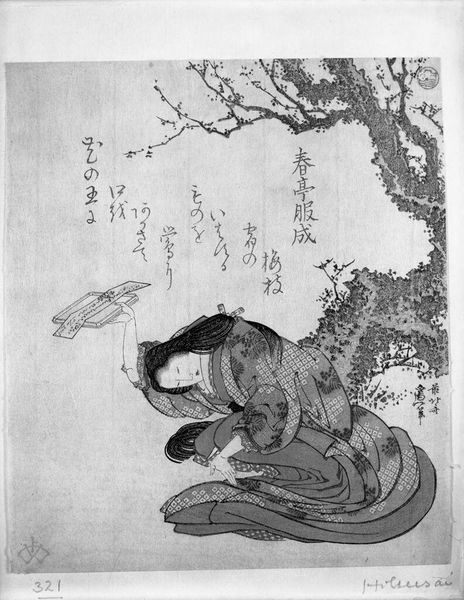
Copyright: Public domain
Editor: Here we have Kanō Motonobu's "Flowers and Birds of the Four Seasons" from 1513. The watercolor painting strikes me as incredibly serene, with its muted tones and the quiet depiction of nature. What stands out to you as you view this piece? Curator: The serenity you mention is certainly present, but it’s also worth considering the context in which this painting was created. During the Muromachi period, where did art like this primarily circulate? Consider the socio-political landscape influencing its creation. Editor: You mean like, was it commissioned by a wealthy patron, maybe someone in the Shogunate, or created for temples? Curator: Exactly! Understanding the patronage and intended audience shifts our perspective. This piece, very likely commissioned, speaks to the values of the ruling elite – a celebration of controlled nature, a reflection of their cultivated aesthetic. Editor: So the landscape isn’t just a pretty picture, but a statement about power and taste? Curator: Precisely. The delicate brushwork, the carefully arranged flora and fauna – all serve to project an image of sophistication and cultural capital. Even the subdued color palette, rather than simply being "serene," becomes a marker of refined taste, distinct from more popular, bolder styles. Does understanding the patron change how you view the scene now? Editor: Absolutely! It feels less like a purely objective observation of nature, and more like a constructed ideal. So interesting. I hadn’t thought of it in that way. Curator: Thinking about these socio-historical dynamics enriches our appreciation of art, moving beyond simple aesthetics to a deeper engagement with cultural narratives. I found the discussion has also highlighted that interplay beautifully.
Comments
No comments
Be the first to comment and join the conversation on the ultimate creative platform.
